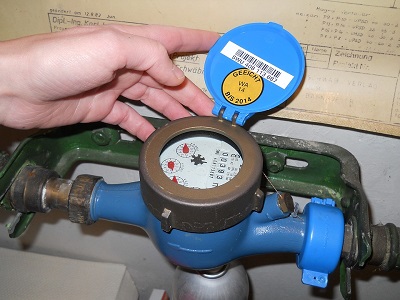Necessity of Measuring Irrigation water
It is essential to measure the quantity of water used in irrigation because it:
- Helps to apply the correct quantity of water to the fields.
- Reduces wastage of irrigation water.
- Helps in preventing the damages caused to the fields by excess use of water.
- Helps in increasing crop yield.
Water Measuring Devices
Water measuring devices can be grouped into four types:
1. Volumetric Measurements
In this method, the discharge is calculated by the simple equation given below.
\({\rm{Discharge}}\,{\rm{Rate = }}\frac{{{\rm{Volume}}\,{\rm{of}}\,{\rm{water}}\,{\rm{collected}}\,{\rm{(in}}\,{\rm{litres)}}}}{{{\rm{Time}}\,{\rm{of}}\,{\rm{filling}}\,{\rm{container}}\,{\rm{(in}}\,{\rm{seconds)}}}}\)
Where,
Volume is measured in litres
& Time is measured in seconds
2. Velocity area Method
In this method, the discharge is calculated by multiplying the cross-sectional area of flow and the average velocity of the flow.
Discharge = Area ✖ Velocity
Q = A ✖ V
Where,
Q = Discharge rate in m3/s
A = Cross-sectional Area of flow in m2
V = Average velocity of flow measured in m/s
3. Float Method
In this method of water measurement, the water is measured with the help of a floating object. In this method a floating object is used to measure the surface velocity of water in a channel, the average velocity of the stream is calculated by multiplying the surface velocity with velocity correction factor.
Mathematically, the average velocity of the stream is calculated by the expression below:
V = Cf ✖ Vf
Where,
V = Average velocity of the stream is measured in m/s
Cf = Velocity correction factor
Vf = Float velocity measured in m/s
The average velocity thus calculated is multiplied by the width and depth of the channel to obtain the quantity of water passing through the channel.
Precautions to be done while performing this method:
- This method should be performed in a straight channel that is uniform and free from surface disturbances and cross currents.
- The floating object should be released from a sufficient distance with the actual test section so that the float can attain the stream velocity before it enters the test zone.
- Tests should be avoided in windy conditions as this may affect the velocity of the float.
4. Current Meter
This is a small device consisting of a revolving wheel or vane which rotates because of the movement of water. For measuring the velocity of water in deep streams it is suspended by cables while for shallow streams it is attached with rods. The number of revolutions made by the wheel in a given time interval is obtained, by which the corresponding velocity of water is obtained from the calibration table or chart of the instrument. The standard procedure is to divide the cross-section into segments and in each segment, the current meter is used to measure the average velocity in each segment from two depth measurements. In the two depth method, the average velocity is obtained at 0.2m and 0.8m of the depth in each segment and the average of these two values gives the average velocity of flow for ordinary conditions.
5. Water meter
Water meter works by measuring the speed of flowing water, this device utilizes a multi-blade propeller made of metal or plastic or rubber, rotating in a vertical plane and geared to a totalize (counter) such that a numerical counter can totalize the flow in any desired volumetric units as the volumetric flow rate of water is proportional to the rotational speed of the water. Water meters are available for a range of suitable sizes of pipes which are commonly used on farms. The two basic requirements for the accurate operation of a water meter.
- The pipe must flow full at all times.
- The rate of flow must exceed the minimum for the rated range.




